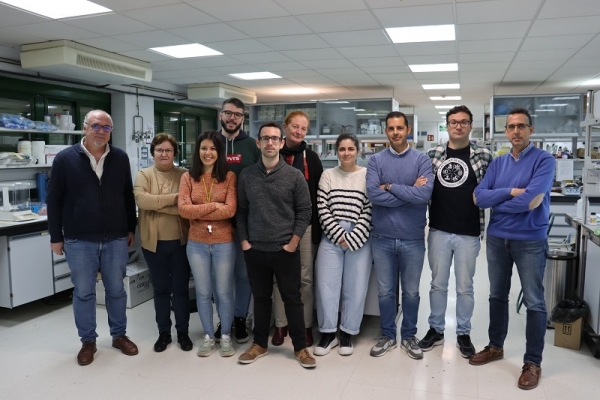Hemoglobin is a protein present in red blood cells and is responsible for conveying oxygen from the lungs to the different tissues of the body (and then transferring carbon dioxide the other way around). It has a very high affinity for oxygen and is fundamental for life, but, what if it were also a key element for a type of electrochemical device in which oxygen also plays an important role, such as zinc-air batteries?
This is what the Physical Chemistry (FQM-204) and Inorganic Chemistry (FQM-175) groups at the University of Córdoba (UCO) wanted to verify and develop, together with a team from the Polytechnic University of Cartagena, after study by the University of Oxford and a Final Degree Project at the UCO demonstrated that hemoglobin featured promising properties for the reduction and oxidation (redox) process by which energy is generated in this type of system. Thus, the research team developed, through a Proof of Concept project, the first biocompatible battery (which is not harmful to the body) using hemoglobin in the electrochemical reaction that transforms chemical energy into electrical energy.
Using zinc-air batteries, one of the most sustainable alternatives to those that currently dominate the market (lithium-ion batteries), hemoglobin would function as a catalyst in such batteries. That is, it is a protein that is responsible for facilitating the electrochemical reaction, called the Oxygen Reduction Reaction (ORR), causing, after the air enters the battery, oxygen to be reduced and transformed into water in one of the parts of the battery (the cathode or positive pole), releasing electrons that pass to the other part of the battery (the anode or negative pole), where zinc oxidation occurs.
As UCO researcher Manuel Cano Luna explains: "to be a good catalyst in the oxygen reduction reaction, the catalyst has to have two properties: it needs to quickly absorb oxygen molecules, and form water molecules relatively easily. And hemoglobin met those requirements." In fact, through this process, the team managed to get their prototype biocompatible battery to work with 0.165 milligrams of hemoglobin for between 20 and 30 days.
In addition to strong performance, the battery prototype they have developed boasts other advantages. First of all, zinc-air batteries are more sustainable and can withstand adverse atmospheric conditions, unlike other batteries affected by humidity and requiring an inert atmosphere for their manufacture. Secondly, as Cano Luna argues, "the use of hemoglobin as a biocompatible catalyst is quite promising as regards the use of this type of battery in devices that are integrated into the human body", such as pacemakers. In fact, the battery operates at pH 7.4, which is a pH similar to that of blood. In addition, since hemoglobin is present in almost all mammals, protein of animal origin could also be used.
The battery they have developed has some room for improvement, however. The main one is that it is a primary battery, so it only discharges electrical energy. Also, it is not rechargeable. Therefore, the team is already taking the next steps to find another biological protein that can transform water into oxygen and, thus, recharge the battery. In addition, the batteries would only work in the presence of oxygen, so they could not be used in space.
The study, published in the journal Energy & Fuels, opens the door to new functional alternatives for batteries in a context in which more and more mobile devices are expected, and in which there is a rising commitment to renewable energies, such that it is necessary to have devices that store excess electrical energy in the form of chemical energy. Most importantly, the most common batteries today, lithium-ion, are saddled with the problems of lithium's scarcity and its environmental impact as hazardous waste.
Reference:
Valentín García-Caballero, Sebastián Lorca, Marta Villa-Moreno, Álvaro Caballero, Juan J. Giner-Casares, Antonio J. Fernández-Romero, and Manuel Cano, “Human Hemoglobin-Based Zinc–Air Battery in a Neutral Electrolyte,” Energy Fuels, 2023, 37, 23, 18210–18215, https://doi.org/10.1021/acs.energyfuels.3c02513.


